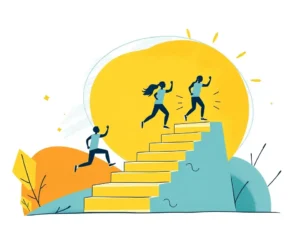Maintaining a strong core is vital at any age, but it becomes increasingly crucial as we get older. A robust core supports balance, stability, and the ability to perform everyday tasks with ease. Dr. Kaye Cleave, at 76, is a testament to the power of bodyweight exercises in achieving remarkable core strength. Her journey, marked by personal tragedy and a renewed commitment to physical activity, highlights how a simple, consistent routine can transform one’s physical well-being. Inspired by Dr. Cleave’s story, let’s explore a 5-move bodyweight routine that can help you build a stronger core, regardless of your age or fitness level.
Why Core Strength Matters for Seniors
Before diving into the routine, it’s essential to understand why core strength is so important, especially for seniors.
- Improved Balance and Stability: Your core muscles stabilize your body, whether moving, navigating uneven terrain, or standing still. A stronger core enhances balance, preventing falls and injuries.
- Enhanced Mobility and Functional Fitness: Core strength simplifies daily tasks like walking, climbing stairs, getting out of bed, and carrying groceries. It allows you to move with more confidence and ease.
- Reduced Pain: Strengthening your core ensures efficient body movement, reducing stress on your back and other joints. This can alleviate lower back pain and other types of discomfort common in older adults.
- Injury Prevention: A strong core protects against injuries from falls and routine actions, allowing you to maintain an active lifestyle.
- Better Posture: Core muscles support the spine, improving posture and reducing the risk of back pain.
Dr. Cleave’s 5-Move Bodyweight Routine
Dr. Cleave’s routine, inspired by PT James Stirling, focuses on simple yet effective bodyweight exercises that can be done at home with no equipment. She recommends doing one set of each exercise, resting for 60 seconds, and then repeating for a second set.
1. Leg Lifts
- How to do it: Lie on your back with your legs extended and arms at your sides. Engage your core and lift your legs off the ground, keeping them straight. Hold for a few seconds, then slowly lower them back down.
- Why it works: Leg lifts target the lower abdominal muscles and hip flexors, improving core stability and strength.
- Duration: 30 seconds.
- Modifications: If you find it difficult to keep your legs straight, you can bend your knees slightly. You can also perform seated leg lifts in a chair.
2. Hollow Hold
- How to do it: Lie on your back with your arms extended overhead and legs straight. Engage your core and lift your head, shoulders, and legs off the ground, forming a slight curve in your body. Hold this position, maintaining tension in your core.
- Why it works: The hollow hold is an isometric exercise that strengthens the entire core, including the abdominal muscles, lower back, and obliques.
- Duration: 30 seconds.
- Modifications: If you cannot lift your legs fully, keep your knees bent. You can also modify by lifting only your head and shoulders, keeping your legs on the ground.
3. Back Extension
- How to do it: Lie on your stomach with your arms and legs extended. Engage your core and lift your arms and legs off the ground simultaneously, arching your back slightly. Hold for a few seconds, then slowly lower them back down.
- Why it works: Back extensions strengthen the lower back muscles, which are essential for spinal support and posture.
- Duration: 30 seconds.
- Modifications: If lifting both arms and legs is too challenging, start by lifting only your arms or legs. You can also place a rolled towel under your hips for support.
4. Plank
- How to do it: Start in a push-up position with your forearms on the ground, elbows aligned with your shoulders, and body in a straight line from head to heels. Engage your core and hold this position, maintaining a neutral spine.
- Why it works: The plank is a full-body exercise that strengthens the core, shoulders, arms, and legs. It improves stability and posture.
- Duration: 30 seconds.
- Modifications: If a full plank is too difficult, try a modified plank on your knees. You can also perform a side plank against a wall for support.
5. Side Plank
- How to do it: Lie on your side with your forearm on the ground, elbow aligned with your shoulder, and body in a straight line from head to feet. Engage your core and lift your hips off the ground, holding this position.
- Why it works: Side planks target the obliques, which are crucial for lateral stability and core strength.
- Duration: 30 seconds on each side.
- Modifications: If a full side plank is too challenging, keep your bottom knee on the ground. You can also perform a side plank against a wall for support.
Additional Bodyweight Exercises for Seniors
In addition to Dr. Cleave’s routine, several other bodyweight exercises are beneficial for seniors looking to improve their core strength and overall fitness.
Seated Exercises
- Seated Marches: Sit comfortably in a chair and lift each knee towards your chest, alternating legs in a marching motion. This improves hip and knee mobility while engaging the core for stability.
- Seated Leg Lifts: Sit in a sturdy chair and slowly lift one leg as high as comfortable, keeping it straight. This enhances hip and thigh mobility.
- Seated Twists: Sit in a chair with a straight back and gently twist your torso from side to side, engaging your core muscles.
- Seated Side Bends: Sit in a chair and bend to the side, reaching towards the floor with one hand while keeping your back straight. This helps strengthen your abdominal and oblique muscles.
- Seated Forward Roll-Ups: Sit in a chair, extend your legs, and roll your torso forward towards your toes, engaging your abdominal muscles.
Standing Exercises
- Wall Push-ups: Stand facing a wall, place your hands on the wall at shoulder height, and lean forward, bending your elbows to lower your chest towards the wall. This strengthens the chest, shoulders, and arms.
- Chair Squats: Stand in front of a chair and lower your body as if you were sitting down, then stand back up. This strengthens the lower body and improves balance.
- Standing Marches: Stand tall with a chair or wall for support and lift each knee towards your chest, alternating legs.
- Standing Crunch: Stand up straight with your feet slightly apart and gently curl your torso forward, engaging your core muscles.
- Toe Lifts: Stand straight, holding onto the back of a chair, and lift your toes off the ground, shifting your weight onto your heels.
Floor Exercises
- Glute Bridge: Lie on your back with your knees bent and feet flat on the floor. Lift your hips off the ground, squeezing your glutes at the top. This strengthens the glutes and lower back.
- Bird Dog: Start on all fours and extend one arm forward and the opposite leg backward, keeping your core engaged. This improves core stability and balance.
- Superman: Lie on your stomach and lift your arms and legs off the ground simultaneously, arching your back slightly. This strengthens the lower back.
- Hip Lift: Sit back on your knees with your hands on the floor. Tighten your core muscles and lift your body off the floor, using your legs, arms, and shoulders for support.
Tips for Seniors Starting a Bodyweight Routine
- Consult Your Doctor: Before starting any new exercise routine, it’s essential to consult your doctor, especially if you have any underlying health conditions.
- Start Slowly: Begin with a few repetitions of each exercise and gradually increase the number as you get stronger.
- Listen to Your Body: Pay attention to your body and stop if you experience any pain.
- Use Proper Form: Focus on maintaining proper form to avoid injuries. If you’re unsure about the correct form, consider working with a physical therapist or certified personal trainer.
- Stay Consistent: Aim to exercise regularly, even if it’s just for a few minutes each day. Consistency is key to building strength and improving your overall fitness.
- Modify as Needed: Don’t be afraid to modify exercises to suit your fitness level and abilities.
- Stay Hydrated: Drink plenty of water before, during, and after your workouts.
- Warm-Up and Cool Down: Always warm up before exercising and cool down afterward to prevent injuries.
- Breathe Properly: Remember to breathe normally throughout your exercises, inhaling and exhaling through your nose.
Benefits Beyond Core Strength
While this routine focuses on core strength, bodyweight exercises offer a multitude of other benefits for seniors, including:
- Improved Cardiovascular Health: Bodyweight exercises can elevate your heart rate and improve your cardiovascular health.
- Increased Muscle Mass: Strength training helps maintain and build muscle mass, which is crucial for overall health and mobility as we age.
- Enhanced Bone Density: Weight-bearing exercises can improve bone density, reducing the risk of osteoporosis.
- Better Mood and Cognitive Function: Exercise has been shown to improve mood, reduce stress, and enhance cognitive function.
Conclusion
Dr. Kaye Cleave’s story is an inspiring example of how bodyweight exercises can transform your core strength and overall well-being, regardless of your age. By incorporating her 5-move routine and other recommended exercises into your daily life, you can improve your balance, stability, mobility, and overall quality of life. Remember to consult your doctor before starting any new exercise program and listen to your body as you progress. Embrace the power of bodyweight training and unlock a stronger, healthier, and more active you.







